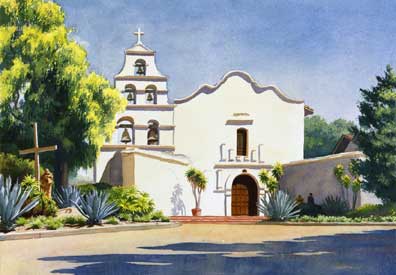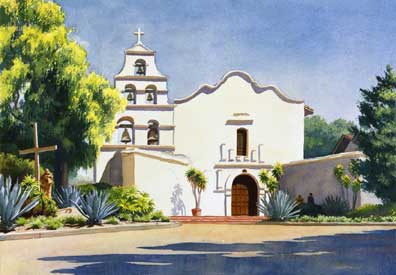In 1803 an earthquake destroyed all the mission buildings. The patient, hard working priests once again, simply began to rebuild the mission. In 1813 new church was completed and blessed by Fathers. By 1824 mission San Diego reached it's largest population. 1,829 Indians lived there.
The last regular report of mission San Diego said the Fathers baptized 6,522 people since 1769. The first baptism of Indian was performed in April of 1770. He was a 3 year old boy. Fathers changed his name to Francisco Antonio. They also performed 1,803 marriages and 4,332 funeral services.
In 1848 California became part of the United States and American priests took over. In 1853 Archbishop Alemany claimed the mission for Catholic church.




